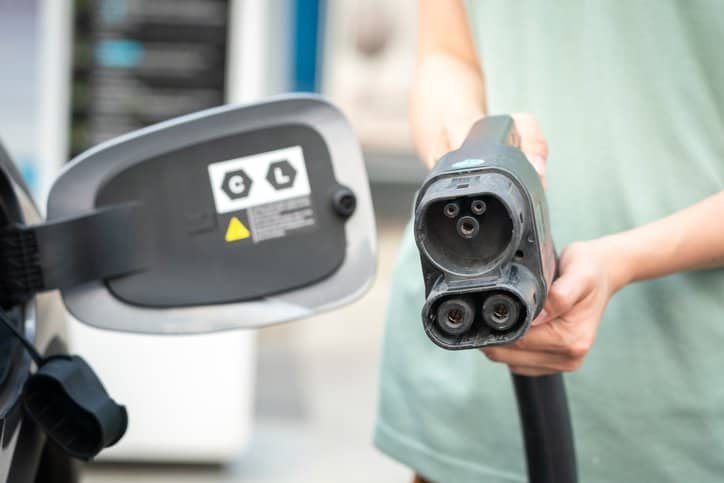IEEE Test Suite Specification: DC Fast Charging

DC fast chargers (DCFCs) are the fastest and most powerful charging option for electric vehicles (EVs). They can charge an EV to 80% in 20 minutes to an hour; some high-powered DCFCs can add up to 100 miles of range in as little as 10 minutes. IEEE Test Suite Specification: Electric Vehicles—a IEEE DC Quick Charger For Use With Electric Vehicles Test Suite Specification – Version 1.0 applies to the testing of DC quick charger conformance and performance.
Alternating Current vs Direct Current
Electrical current comes in two forms: alternating current (AC) and direct current (DC).
- Alternating Current (AC) is the type of electricity that flows through power grids and into homes and businesses, including to power EV chargers. AC can be thought of as “low and slow” charging.
- Direct Current (DC) is the type stored in batteries and is very fast and powerful.
What Is DC Fast Charging (DCFC)?
DC fast charging (DCFC) is a method of charging electric vehicles (EVs) that uses direct current (DC) to power the battery directly, bypassing the vehicle’s onboard charger. DCFC stations convert alternating current (AC) power from the grid to DC power before it reaches the vehicle, enabling larger converters and faster charging speeds. In fact, some DCFC stations able to fully charge an EV in as little as 15 minutes.
What Is the IEEE Test Suite Specification: Electric Vehicles?
IEEE Test Suite Specification: Electric Vehicles provides organizations that are testing DC quick chargers for use with electric vehicles performance with a suite of unambiguous test plans. The document further provides requirements for equipment used for the testing of DC quick chargers, requirements for the measurements, observations and/or document evidence that are to be recorded in a final test report. Test plans and requirements in IEEE Test Suite Specification: Electric Vehicles are more specific than requirements of the standard for DC quick charger performance.
The Earliest Electric Vehicles
In 1828, Hungarian Anyos Jedlik created the earliest form of an electric vehicle. This small model carriage was powered by non-rechargeable primary cells. The 1830s experienced a surge of incremental electric vehicle developments. In Scotland, inventor Robert Anderson created a basic electric carriage, as did a Professor Stratingh of the Netherlands, and across the Atlantic, Thomas Davenport of Vermont made a similar contraption. It took until the 1890s, however, for the production of electric vehicles to occur.
William Morrison of Iowa created the United States’ first successful electric ‘car” around 1890. It was a wagon that could carry up to six passengers at a speed of 23 km/h, compared to internal-combustion engine (ICE) vehicles’ maximum speed of 12 mph. In 1895, British inventor Thomas Parker was responsible for electrification of the London Underground system.
The Demise and Rebirth of Electric Vehicles
By the final years of the 19th century, electric trains were being used to transport coal from mines, and electric taxis (nicknamed hummingbirds, due to the humming sound they made) were in use on the streets of London. In 1897, electric-powered taxis were even introduced in New York City, but electric cars lost interest in the 1920s when improvements were made to the internal combustion engine for gas-powered cars.
The discovery of petroleum reserves led to a drop in the price of fuel for internal combustion vehicles, and improvements in road networks meant drivers wanted to travel further than the limited range that electric vehicles allowed. Fundamentally, internal combustion cars could simply travel longer distances, at faster speeds and for a lower cost. Today, electric vehicles can travel at faster speeds, longer distances, and at an increasingly lower cost throughout their lifetime, when compared to costly gas and diesel refilling. Further, the invention of DC quick charging helps solve the challenge of making long-distance travel and refueling fast and easy for electric vehicles.
IEEE Test Suite Specification: Electric Vehicles—a IEEE DC Quick Charger For Use With Electric Vehicles Test Suite Specification – Version 1.0 is available on the ANSI Webstore.






